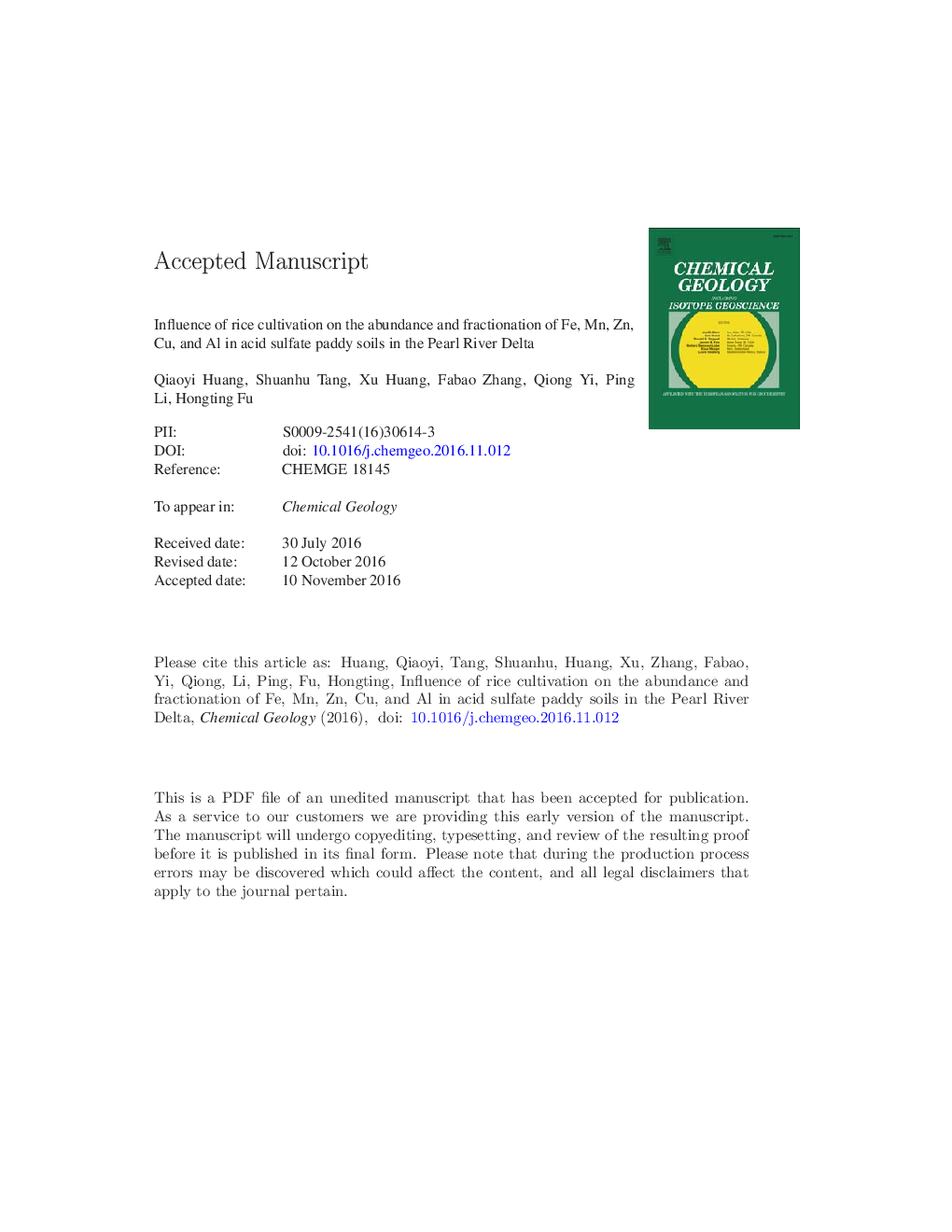| Article ID | Journal | Published Year | Pages | File Type |
|---|---|---|---|---|
| 5782931 | Chemical Geology | 2017 | 27 Pages |
Abstract
Many of the areas dominated by acid sulfate (AS) soils in southern China have been reclaimed for rice cultivation and represent an important source of agricultural production and food security for the local population. In this study, we examined the abundance and partitioning of Fe, Mn, Zn, Cu, and Al in both rice paddy fields and uncultivated fields by using a six-step sequential extraction procedure. Rice cultivation significantly reduced acidity levels at soil depths of 0-100Â cm, but acidity at depths of 100-140Â cm increased significantly. A substantial loss of Mn in the oxide and acidified soil layer (0-100Â cm) compared to the underlying parent material was observed, but there were few changes in the concentrations of Fe and Zn throughout the soil profile. However, both Cu and Al were substantially enriched in the superficial soil (0-40Â cm) compared to the underlying subsoil (40-140Â cm). In general, leaching of Fe, Mn, and Al was higher in the paddy fields because of intensified irrigation and flood conditions, whereas accumulation of Cu, mainly in the form of “acid soluble” and “crystalline iron oxide” Cu, was higher in the paddy fields than in the uncultivated fields. The most marked declines in metal concentrations occurred in the “labile” and “acid soluble” fractions, as a result of rice cultivation, which increased leaching of the readily mobilized “labile” and “acid soluble” fractions of heavy metals in these soils.
Related Topics
Physical Sciences and Engineering
Earth and Planetary Sciences
Geochemistry and Petrology
Authors
Qiaoyi Huang, Shuanhu Tang, Xu Huang, Fabao Zhang, Qiong Yi, Ping Li, Hongting Fu,
